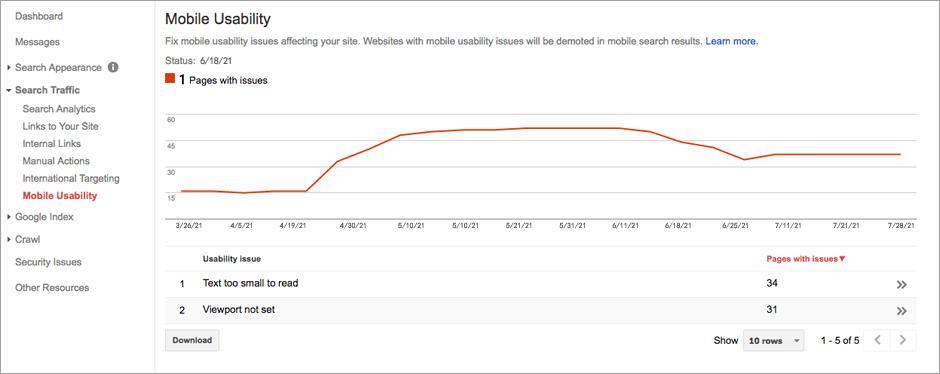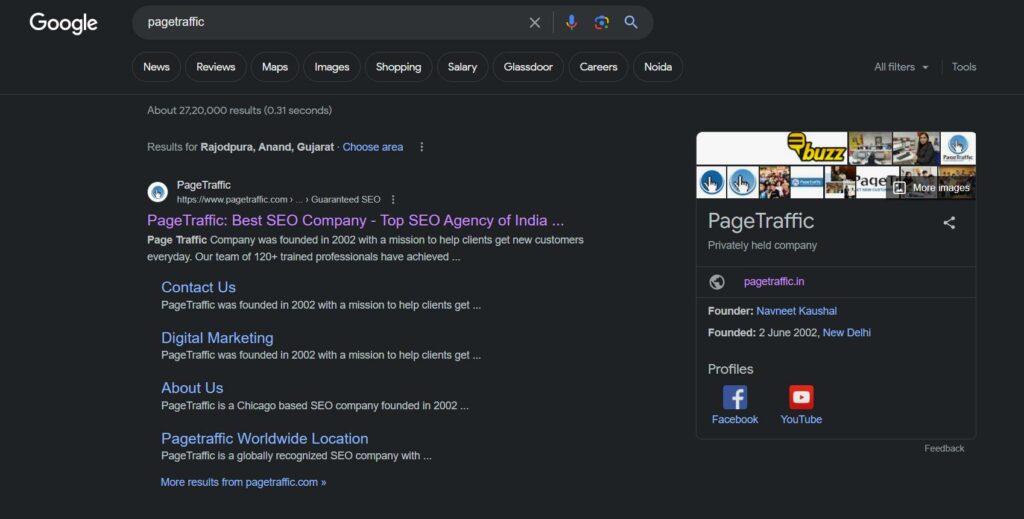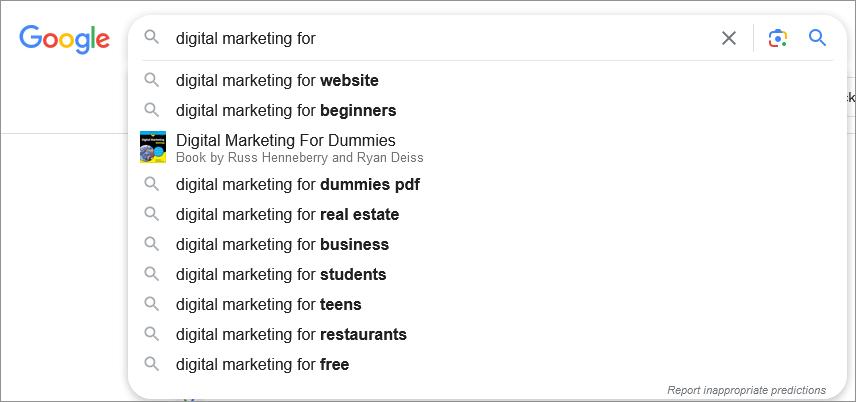In the vast digital ocean, SEO for startups isn’t just a good idea; it’s a lifeline. Every startup dreams of capturing the spotlight, but let’s face it – the titans of the industry often overshadow their flickering beginnings.
How, then, does a fledgling venture make a mark? How does it claim its space amidst the cacophony? Enter the world of SEO for startups, a treasure trove of techniques specially tailored for budding businesses. If you’ve been struggling to make an impact, you’re about to embark on a journey of discovery.
Ten strategies lie ahead, each uniquely crafted to outmanoeuvre the behemoths and position your startup right where it needs to be – at the pinnacle of visibility. This is more than just SEO; it’s a blueprint for startup success against the big players. Ready to dive in?
Dispelling Common Reasons Founders Give About SEO for Startups
Reading posts offering advice on how to increase your website’s exposure on search engines, many business owners share three key concerns:
- First and foremost, the cost of SEO can be daunting; the idea of paying for expensive tools or hiring specialists may induce financial stress.
- Second, it’s crucial to debunk the myth that SEO competition is extraordinarily tough. While it may seem like big businesses dominate the industry, this perception can be challenged.
- Finally, waiting a long time for SEO efforts to yield results can be frustrating, especially when generating leads quickly is a priority. However, the importance of SEO shouldn’t be hastily dismissed.
- Moreover, let’s debunk the myth that finding experienced SEO professionals is an insurmountable challenge.
SEO agencies assist startups by optimising their online presence to rank higher on search engines, driving organic traffic and enhancing visibility among potential customers. This expertise accelerates a startup’s growth by ensuring they’re discoverable when users search for relevant products or services.
Reason 1: The Expense of SEO for Startups Can Be Daunting
According to HubSpot’s research, SEO is the way to go for B2B marketing when it comes to minimal risk and extremely high ROI. If you invest time and energy into SEO, you’ll see those gains gradually increase and yield amazing dividends. There’s no need to spend a fortune on flashy consultants, agencies, or software solutions.
In fact, be wary of flashy SEO organisations as they often offer deals that are simply too good to be true. Right now, attention, tracking, action, and a dash of patience are your main ingredients.
Also Read: Affordable SEO Services for Small Businesses- 2024 Guide
Reason 2: SEO Competition Is Extraordinarily Tough
There is no denying that the competition is fierce. But this rule holds true everywhere because tough competition is the name of the game! Let’s be clear: Enhancing SEO and organic presence is the top goal for digital marketing for businesses across five key world regions.
Let’s discuss strategy: the longer you postpone entering, the more quickly your competitors advance. So stop wasting time now!
And now for pro-level advice: Discover the potential of the outstanding keyword research tool, TopicRanker. With it, you can quickly find a ton of readily rankable keywords without having to put in any manual labour. Take the risk; your future self will thank you.
Reason 3: Results From SEO Take Too Long to Show
Be mindful of the fact that you are a startup with a limited budget. Now, consider your options: Would you rather spend money on lead generation through PPC channels, thereby increasing your customer acquisition cost (CAC)? Alternatively, you could opt for free leads that won’t vanish as soon as your spending stops.
Ultimately, the decision is yours. Although buying leads can expedite results, it’s essential to remember that paid channels can be very costly, especially for new businesses. Your finances could take a severe hit if you make mistakes here.
On the other hand, SEO is a tactic that allows you to make a few early mistakes without suffering significant financial consequences. However, keep in mind that, according to Forbes, it can take 4 to 6 months before you start seeing actual SEO results. There is a balance to be considered.
Also Read: How Long Does SEO Take to Update After I Changed Something on My Site?
Reason 4: Hiring Someone With SEO Skills Is Too Challenging
We understand that it can be challenging to find the perfect people to join your startup team, especially when your startup is just getting off the ground and the hiring process seems like another language.
To find someone, there is absolutely no magic involved. Simply roll up your sleeves, jump into LinkedIn, and start searching for profiles that match what your company needs.
Do you feel that’s not your style? No big deal. You can always pass the baton and delegate the labour-intensive hiring to a recruitment team. It saves so much time and, quite frankly, keeps you sane.
The best part is that you only open your wallet after finding the ideal candidate for your team. They will receive a portion of the new hire’s salary, which, let’s face it, is relatively reasonable given that they are saving you a ton of time and hassle. So, let’s get to work and simplify the hiring process!
Startup SEO Prerequisite Checklist
After covering the initial phases, it’s time to ensure your startup has addressed the essential building blocks before diving into the world of SEO dominance.
- Confirm that you have identified your company’s current stage within the startup lifecycle framework.
- Understand the characteristics of your ideal client and the challenges they encounter.
- Ensure you have moved beyond the product/market fit stage.
- Use the bullseye framework to identify the most effective traction channels.
- Prepare your startup to begin channel/product-appropriate testing, with SEO at the forefront.
- Designate a dedicated internal champion ready to lead your SEO initiatives.
- Establish a system for growth experimentation to track your various tests.
- Develop a solid understanding of traditional startup metrics like CAC, LTV, ARPU, Churn Rate, Burn Rate, and similar ones.
- Set a baseline for all crucial marketing data, including traffic, landing page conversion rates, leads by source, and MQL to SQL conversion rates.
If you’ve addressed these prerequisites, you’re well on your way to strategically employing SEO techniques to unlock your startup’s full potential.
Achieving SEO Success for Your Startup in 10 Simple Steps
- Clearly articulate and communicate your goals and expected outcomes.
- Ensure your measurement plan is robust and outlines what, how, and why you will measure.
- Thoroughly crawl your website, examining every corner during a comprehensive technical SEO analysis.
- Scrutinise your website’s UX, taxonomy, navigation, and mobile compatibility in detail.
- Leverage every possible method of on-page optimisation, seizing every opportunity.
- Strategically assess branded search potential while aggressively safeguarding your reputation.
- Deliberately conduct extensive research on non-branded terms, focusing on profitable long-tail opportunities.
- Prioritise content marketing opportunities.
- Pursue link building aggressively while integrating effective influencer amplification strategies.
- Stay updated on the latest SEO news and trends, including any changes made by Google.
Step 1: Clearly State and Communicate Your Objectives and Desired Results
Your objectives will depend on your business type and revenue model.
Let’s examine different types of businesses and their revenue sources:
- Big Publishers: These entities focus on traffic and personalisation as they generate significant revenue from advertisements.
- Channel Partners and Resellers: Although resellers and channel partners do not sell tangible items, they have a following. They excel at marketing the products and services of other businesses, striving to expand their email list, increase brand recognition, secure repeat customers, enhance their brand image, and obtain positive PR.
- E-Commerce Heroes: As expected, they concentrate solely on direct online sales through their website. Their SEO must be impeccable. Imagine an e-commerce expert aiming to rank well for “Buy me!” keywords while preventing bounce rates on their product pages.
- Local Legends: Think of charming restaurants or brick-and-mortar treasures. Their SEO objectives? They aim to top the results for “near me” searches and voice assistant queries during shopping. Many customers consult their phones for product information while browsing aisles.
- SaaS Gurus: SEO is vital for SaaS pioneers because it delivers results. While overseeing Pipedrive’s SEO efforts, we climbed the ranks for a popular term within three months. Surprisingly, it didn’t include a term related to our brand. However, it triggered a surge in sign-ups because we offered a valuable resource that helped our top-tier clients solve a problem
To stimulate your thinking, here are some general SEO objectives:
- Elevate your startup’s reputation in a specific industry.
- Enhance your startup’s position in a particular sector.
- Drive more high-quality traffic to your product pages.
- Increase engagement by focusing on session duration, scroll depth, etc.
To further spark your interest, consider these specific SEO goals:
- Double your website’s new visitors in Q1.
- Boost your blog traffic by 50% this year.
- Increase your email subscribers by 10% from organic traffic.
- Attract prospects from targeted industries, such as construction or real estate.
- Accelerate your eCommerce platform’s transactions from X to Y.
Step 2: Ensure Your Measurement Plan Is Strong and Explains What, How, and Why You Will Measure
Implement these fundamental steps to ensure success:
- Get Google Analytics up and running.
- Set up Google Search Console to monitor your website’s performance.
- Don’t forget to configure Analytics’ Goal Conversion Tracking.
- Link your marketing automation and CRM software to your lead-generation channels.
- Create a map of all your metrics and associate each one with a data source.
- Consider employing dashboard solutions to automate part of your reporting.
Step 3: Crawl Through Your Website Painstakingly, Checking Every Nook and Cranny as You Do a Thorough Technical SEO Analysis
We’re about to dive deep into a wealth of information, but don’t worry; we’ll simplify it so you only learn what’s necessary.
First, let’s talk about crawling your website. Use a programme like Screaming Frog; its free edition covers up to 500 URLs. If you’re a startup with a small site, this will suffice.
Now, onto the crawl report. You might be staring at a spreadsheet filled with rows and columns that resemble hieroglyphs. Don’t panic! SEER Interactive’s tutorial can help you decipher it.
Key points for your comprehensive SEO audit include:
- Website Crawl: This involves using a programme like Screaming Frog to inspect every nook and cranny of your website meticulously. It’s akin to hiring a detective to investigate every page. If your website is small and you’re a startup, don’t worry; Screaming Frog’s free edition covers up to 500 URLs.
- Crawl Report Analysis: After crawling your site, you’ll receive a report filled with a plethora of information. Don’t be overwhelmed by the volume of data. SEER Interactive’s tutorial can help you make sense of it.
- Duplicate Content: Having identical content in multiple locations on your website can be problematic, especially for online retailers. Yoast’s guide breaks down the different ways duplicate content can appear.
- Meta Robots: Meta robots are akin to traffic officers for search engines. Ensure you don’t accidentally block them from accessing vital pages.
- Robots.txt: Developers may use the robots.txt file to place a “Do Not Enter” sign for search engines in certain areas of your website. However, they sometimes forget to remove it. Check your “robots.txt” file for any “disallow” commands.
- Inappropriate Redirects and Redirect Chains: Redirects guide visitors and search engines to specific pages. However, if they are configured incorrectly, it’s like sending them in circles.
- Broken Media Assets: Have you ever encountered a “404 Error” after clicking a link or tried to watch a video that wouldn’t play? Those media files are broken. SEMrush provides a tool to fix these errors.
- 404 Pages: These are pages that have vanished and no longer exist. They can frustrate visitors and negatively impact your search rankings. The solution? Implement a “301 redirect.”
- Broken Links: Links from other websites serve as endorsements. However, if these links are broken, it’s like having a disconnected phone line. SEO tools like Screaming Frog, Ahrefs, or Moz can help you identify and fix them.
- URL Structure: URLs act as addresses for web pages. They should include relevant keywords and be concise and clear.
- Slow-Loading Pages: Both visitors and search engines find slow websites frustrating. Google offers a tool to assess your page’s speed.
Step 4: Examine Your Website’s UX, Taxonomy, Navigation, and Mobile Friendliness in Detail
The user experience on a website is crucial for SEO. Your ranking will undoubtedly be affected if users struggle to navigate your site, access content on mobile devices, encounter intrusive ads and pop-ups or fail to delve deeply into your site’s structure.
Let’s discuss some practical steps you can take to enhance your startup website’s SEO:
- Track Engagement Using Heatmap Technology: Today, marketers have a vast array of options for tracking and analysing engagement using heatmaps. These provide insights into visitor behaviour, such as location, clicks, interactions with different website sections, and more. Hotjar is an excellent tool for this purpose. It’s my personal favourite, and they offer a freemium version, which is great for budget-conscious entrepreneurs.

- Identify Conversion Funnel Drop-Off Points: This step is vital whether you run an e-commerce site or a SaaS company with complex funnels. Determine where users are leaving your conversion process and why. The funnel feature in Google Analytics can assist with this analysis.
- Optimise Taxonomy and Navigation: Organisational clarity is essential. Both users and search engines should quickly find what they’re looking for on your site. Is your navigation straightforward and user-friendly? Is your internal linking logical? If not, address these issues immediately. Disorganised data could jeopardise your ranking potential.

- Ensure Mobile Friendliness: Use Google’s mobile-friendly testing tool to identify any pages that may not be compatible with mobile devices. To expedite the process, consider using the API in conjunction with URL Profiler to assess numerous URLs simultaneously. Also, check Search Console insights for additional mobile-related information.

Step 5: Maximise On-Page Optimisation by Leveraging Every Available Opportunity
The key to on-page optimisation is aligning your content’s keywords with what users are searching for at each stage of the buying journey.
We also offer a special on-page SEO checklist for those interested; we use it to enhance our content. Surprisingly, it’s free of charge.
Let’s begin:
- Choose Your Ideal Keyword
- Analyse the SERPs: Can You Rank for It?
- Front Load Your Target Keyword to Ace That Title Tag
- Ensure Your Title Tag Does Not Exceed 60 Characters
- Incorporate Buzzwords into Your Title Tag for a Click-Worthy Title
- Craft a Meta Description and Use the Target Keyword to Make It Stand Out
- Include a Strong CTA in Your Meta Description
- Nail It with an H1 Tag Optimised for Your Keyword
- Don’t Forget the H2 Tag – Secondary Keywords Matter, Too
- Incorporate Your Target Keyword within the First 200 Words of Your Body Copy
- Maintain Natural Keyword Density in Your Body Copy
- Include a Few LSI (Latent Semantic Indexing) Keywords in Your Body Copy
- Go the Extra Mile: Does Your Content Fully Address the Searcher’s Query?
- Make Your Content Easy to Read – Ensure Readability and Scannability
- Enliven Your Content with Visuals: Videos, Photos, Screenshots, Slideshares, etc.
- Use the Canonical Tag Correctly and Point It to the Right URL
- Structure Your URL Carefully – Include the Target Keyword
- Maintain Organised URLs with Taxonomic Structure
- Generally, Omit Stop Words from Your URL
- Avoid Using Underscores in Your URL!
- Keep Your URL Short and Sweet (Under 100 Characters)
- Incorporate 1-2 Deep Links to Useful Content in Your Internal Links
- Use Keyword-Related Content as Anchor Text for Your Internal Links
- Employ Natural and Organic Internal Linking
- Include 1-2 Outbound Links to Reputable and Relevant Websites to Share the Love
- Consider Image Size – Choose Suitable Image Dimensions
- Optimise Your Image File Names with the Target Keyword
- Show Your Images Some Love – Use Alt Tags with the Target Keyword
- Don’t Forget Social Media – Optimise Your Facebook Open Graph Tags
- Optimise Your Twitter Cards and Remember Twitter
This step-by-step checklist will help you enhance your on-page SEO game. So, feel free to dominate the search results with your incredible content!
Step 6: Strategically Evaluate Branded Search Potential While Aggressively Protecting Your Reputation
The first step is crucial. Open Google, type in your brand’s name and meticulously examine the search results. This is your investigation, where you will uncover how your brand is perceived online.
Think of it as laying the foundation for your online presence. Each result reveals information about your brand’s perception. Whether it’s positive or negative news, it’s all there, shaping that vital first impression.
Consider this the opening chapter of your brand’s online narrative. These search results serve as an introduction to the world. What’s your objective? To capture this initial impression and leverage it to enhance your brand’s online image. It’s akin to researching your brand’s digital identity, and it all begins with this step.
Below are detailed aspects to be vigilant about:
- Watch Out for Negativity: Stay alert for any adverse news or uncomplimentary reviews related to your brand. Being cognizant of any negative gossip is imperative.
- Clearly Articulate Your Brand’s Story: Ensure there is no confusion about your products or services in the metadata of your website, which is the technical information about your site.
- Effectively Utilise Schema Markup: Don’t overlook this technical aspect. Schema markup is akin to assisting Google in better comprehending your content. Identify opportunities to use it to enhance your brand.
- Harmonise Your Digital Presence: In this digital era, make sure your social media accounts and website links are all organised and correctly linked. Consistency is key.
- Examine User Intent: Scroll to the “searches related to” section at the bottom of the search results page. This is a wealth of information on what customers seek when searching for your brand.
- Decode the Long-Tail Query: Ever notice how Google provides search suggestions as you type? That’s auto-suggest. Utilise it to discover the specific, detailed questions consumers have about your business.
- Confront Your Competitors Head-On: Defensive tactics are essential in SEO. To compare yourself with competitors, search for “versus” or “alternatives to” queries in your search terms. SEMrush provides an enlightening article on this topic for better comprehension.
Consider this example: If you Google our organisation’s name, the results are satisfactory. The site links are logically structured, the metadata serves its purpose effectively, and the search results generally exude a positive aura.

Step 7: Consciously Conduct Thorough Research on Non-Branded Terms, Focusing on Profitable Long-Tail Opportunities
For those seeking quick wins, we recommend the 30-minute keyword research trick.
Here’s a valuable tip: Experiment with template keywords. They rank more effortlessly compared to hefty commercial terms and are excellent for growing your email subscriber list. Take Gong as an example. Their landing page attracts substantial long-tail organic traffic because they compiled a list of the best sales templates ever.
Let’s get started. Begin organising your keyword research into different topic-based buckets. Don’t fixate on specific keywords; start by focusing on the broad categories of head phrases.
Typically, this structure is reflected in a website’s layout and navigation. Extracting topic buckets from a competitor’s website is a helpful tactic.
Their navigation organises those subject categories like a roadmap, making it a treasure trove for your research.

Now it’s time to roll up your sleeves and establish your authority in niche areas while targeting keywords that are both manageable in terms of difficulty and highly relevant to your business.
By using Google’s auto-suggest tool, you can somewhat haphazardly create content tailored to specific personas.
Suppose the career site idea is still in play. Add “for” as a modifier, and voila! You have a plethora of appealing long-tail business options.

And if your budget is somewhat constrained, don’t fret. Use a free tool like keywordtool.io to extract those keywords, then input them into Google’s keyword planner to determine their search frequency.

The essential point is this: If someone has a few hundred dollars to spare each month, it is highly recommended to fully invest in a robust tool like Moz Keyword Explorer or Ahrefs Keyword Explorer. These platforms automate the process, tackling the challenging tasks. The investment is guaranteed to pay off.
Step 8: Bring Opportunities for Content Marketing to the Forefront as a Top Priority
After gathering a substantial number of critical long-tail prospects, possibly including some previously discussed content ideas, it’s time to assert control and prioritise them.
Prioritise keywords based on criteria such as high volume, low difficulty, significant CTR potential, and substantial value and relevance.
Here’s how to set those keywords up for success:
- Firstly, gather data from multiple keyword sources like Auto-Suggest, Related Searches, Moz, Ahrefs, and SEMrush.
- Next, analyse the searcher’s intent behind those terms. Remember, bottom-of-funnel keywords should be the focal point. They can greatly impact your revenue and sales. However, refrain from immediately targeting the most difficult and high-volume ones! Start small and focused, then gradually progress up the funnel.
- Compile all vital keyword information – search volume, CTR potential, difficulty score – and categorise them based on your business goals.
Step 9: Aggressively Pursue Link Building While Combining With Effective Influencer Amplification Strategies
Here’s a quick rundown of essential actions, so pay close attention:
- Avoid Paying for Backlinks: It’s a given that you should never exchange money for backlinks. It’s strictly prohibited.
- Monitor Unlinked Brand Mentions: Be vigilant for instances where your brand is mentioned but not linked. Stay alert.
- Identify Unlinked Mentions of Brand, Domain, and Executives: Time for some detective work. Search for mentions of your organisation’s brand name, URL, and key executives. If there are no links, we’ll need to create some.
- Secure Mentions and Links in Credible Directories and Roundup Posts: Let’s boost visibility. Locate relevant directories and posts, such as “best sales tools.” Ensure your website is not only mentioned but also linked.
- Replicate Your Competitors’ Link Sources: Learning from your competitors can be advantageous. Figure out where and how they are acquiring links, and then get in on the action.
- Leverage Interviews and Influencers to Enhance Your Content: Arrange interviews that spotlight your website. Incorporate influencers as well to intensify your content’s impact.
- Prioritise Backlink Quality Over Quantity: Resist the urge to accumulate a plethora of backlinks. Prioritise quality over quantity. This is the golden rule of the game.
Step 10: Keep Up With the Newest SEO News and Trends, Including Any Changes Made By Google
To stay informed with insightful information and updates, consider visiting these excellent blog:
- Google’s Revamped SEO Guide: This is an ideal opportunity to learn SEO from scratch. The Google guide is a treasure trove of information that shares the latest techniques for enhancing your online presence.
- SEMrush: Dive into SEMrush to uncover the secrets of successful SEO campaigns. This application offers a competitive edge, from competition analysis to keyword tracking.
- Moz: Utilising Moz gives you access to the world of SEO experts. Your optimisation efforts will improve with their resources, which include tools, research, and practical strategies.
- Follow John Mueller on Twitter: Stay abreast of current SEO developments by following John Mueller. His Twitter feed is a goldmine of the latest information and advice directly from Google.
- Ahrefs: Prepare to be amazed by the power of Ahrefs. This robust tool helps you outperform the competition by providing competitive analysis, keyword research, backlink analytics, and more.
- Search Engine Land: Undoubtedly, Search Engine Land is a leading authority in the SEO field. It is your go-to resource for staying updated on the latest industry developments, including real-time news, comprehensive analysis, and in-depth recommendations.
- Backlinko: Brian Dean’s Backlinko is a prime example of top-tier SEO. His articles provide practical advice on dominating search results and boosting organic traffic.
- Search Metrics: Discover crucial metrics with the help of Search Metrics. Their platform provides insightful data that enables you to make informed decisions to advance your SEO efforts.
- Yoast: If you use WordPress, Yoast is your best ally. It offers unparalleled advice for making your WordPress website search engine friendly and optimising it.
- Search Engine Journal: Stay ahead of the curve with Search Engine Journal. This platform offers cutting-edge insights, practical advice, and expert opinions directly from the SEO industry.
Conclusion
In summary, the SEO landscape presents significant challenges, especially for businesses with limited funding. To succeed in this environment, search marketing must be approached deliberately and strategically. As we conclude, here are key takeaways for startups embarking on their SEO journey:
Focus initially on achievable, small wins. These minor victories will pave the way for more substantial future successes. Exercise caution when selecting low-cost services. Although tempting, cost-effective options often fail to deliver the quality and results your startup needs.
Acknowledge that competing with industry giants requires hard work to expedite the process. Building authority takes time and persistence; quick wins against established competitors are uncommon. Ensure a strong technical SEO foundation before initiating content marketing efforts. A solid technical infrastructure will support and enhance your content’s visibility and effectiveness.
Prioritise substance over style when creating content. Craft content that genuinely resonates with your target audience by providing insightful information rather than merely promoting your products. Adopt a data-driven approach by aligning your SEO activities with metrics, analytics, and conversions. Avoid fixating on superficial metrics like total website traffic or social media likes.
Ensure that C-Level Executives find your reports compelling by presenting data in a way that underscores its relevance to broader business goals.
By internalising and implementing these lessons, startups can establish a solid foundation for their SEO efforts. This will pave the way for long-term organic growth in a fiercely competitive digital landscape.
FAQs
Why is it challenging for startups to compete with established companies in SEO?
Startups often find it difficult to stand out in search results because established competitors typically have a more robust web presence, larger budgets, and more resources to devote to SEO efforts.
How can companies identify their unique selling propositions (USPs) to stand out in SEO?
Companies can pinpoint their USPs by understanding their niche, target audience, and what differentiates them from competitors. Highlighting these unique features in content and SEO efforts can help them stand out.
Can startups effectively compete against established businesses using long-tail keywords?
Yes, startups can leverage more specialised and less competitive long-tail keywords. This allows them to better compete for these niche search terms and target a spYes, startups can leverage more specialised and less competitive long-tail keywords. This allows them to better compete for these niche search terms and target a specific audience.ecific audience.
Should businesses focus on a specific social media channel to support their SEO strategy?
Startups should choose social media channels that resonate with their target audience. While social media does not directly impact SEO results, it can increase traffic, engagement, and brand awareness, indirectly supporting SEO efforts.
How can companies monitor and adjust their SEO strategy over time to remain competitive?
Startups can identify trends and opportunities for improvement by regularly analysing metrics such as keyword rankings, website traffic, and user engagement. By staying flexible and adapting their strategy, startups can maintain competitiveness.
What low-cost SEO strategies can businesses employ to compete with limited funding?
Startups should focus on on-page optimisation, creating high-quality content, utilising long-tail keywords, and forming partnerships for backlinks. Leveraging free resources and focusing on low-cost, high-impact tactics can be beneficial.





























 RSS Feeds
RSS Feeds